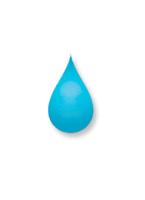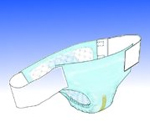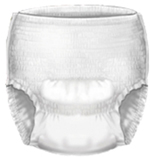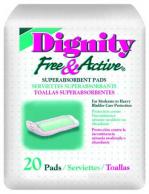Socks / See Video - Washable Bed Pads / See Video - Hospital Gowns - Shoe Covers
Incontinence Product Solutions
Just arrived incontinence products by Kendall®. More »
What is Incontinence?
Urinary Incontinence (UI) is the involuntary loss of bladder control. It is often a symptom of nerve or structural damage to the urinary system, though this damage can be either chronic or temporary. It is important to understand the types and causes of incontinence to make informed treatment options and the choice of absorbency products easier and more efficient. The following is an overview of each of four classifications of incontinence.*
Stress
The most common type of incontinence is stress incontinence. Stress incontinence is the involuntary leakage of small amounts of urine as a result of abnormal or weakened sphincter muscles. Your bladder may leak when you cough, laugh, sneeze, or lift heavy objects. Other physical causes include pregnancy, multiple childbirths, menopause, aging, obesity, surgery, and pelvic fractures. The increased pressure from any of these strains, coupled with weakened pelvic muscles, causes the urine loss.
Stress incontinence is the most common form of incontinence in women. Studies have shown that about 50% of all women experience occasional urinary incontinence, and as many as 10% have frequent incontinence. Nearly 20% of women over age 75 experience urinary incontinence daily.
Urge
Urge Incontinence, the second most common type of incontinence, is usually more severe than stress incontinence. Urge incontinence is characterized by a strong, sudden need to urinate, followed by an involuntary bladder contraction. The sphincter involuntarily opens, so the person may not be able make it to the toilet before losing urine.
Although urge incontinence may occur in anyone at any age, it is more common in women and the elderly. As many as 2% of adult females are affected by urge incontinence.
Overflow
Overflow incontinence is the leakage of small amounts of urine when the bladder is full. The problem occurs because the person suffering from overflow incontinence is not made aware that the bladder is full because the message is not transmitted to the brain effectively. In this case, the reason for the leakage is simple - the amount of urine exceeds the bladder's capacity. Possible causes for this type of incontinence include an enlarged prostate, diabetes, spinal cord injuries, multiple sclerosis, and pelvic trauma.
Overflow incontinence is prevalent in older men with an enlarged prostate and is rare in women.
Reflex
Individuals suffering from reflex incontinence have no control over their need to urinate as a result of nerve or structural damage from surgery or injury. This type of incontinence can be either continual or periodic.
*Always consult your medical professional for a diagnosis of symptoms and recommendation of treatment. This overview is not intended in any way to substitute the advice of a medical professional.
Infomation taken from www.incontinent.com
1991-2023 Personal Touch Health Care Apparel Inc. | All Rights Reserved









